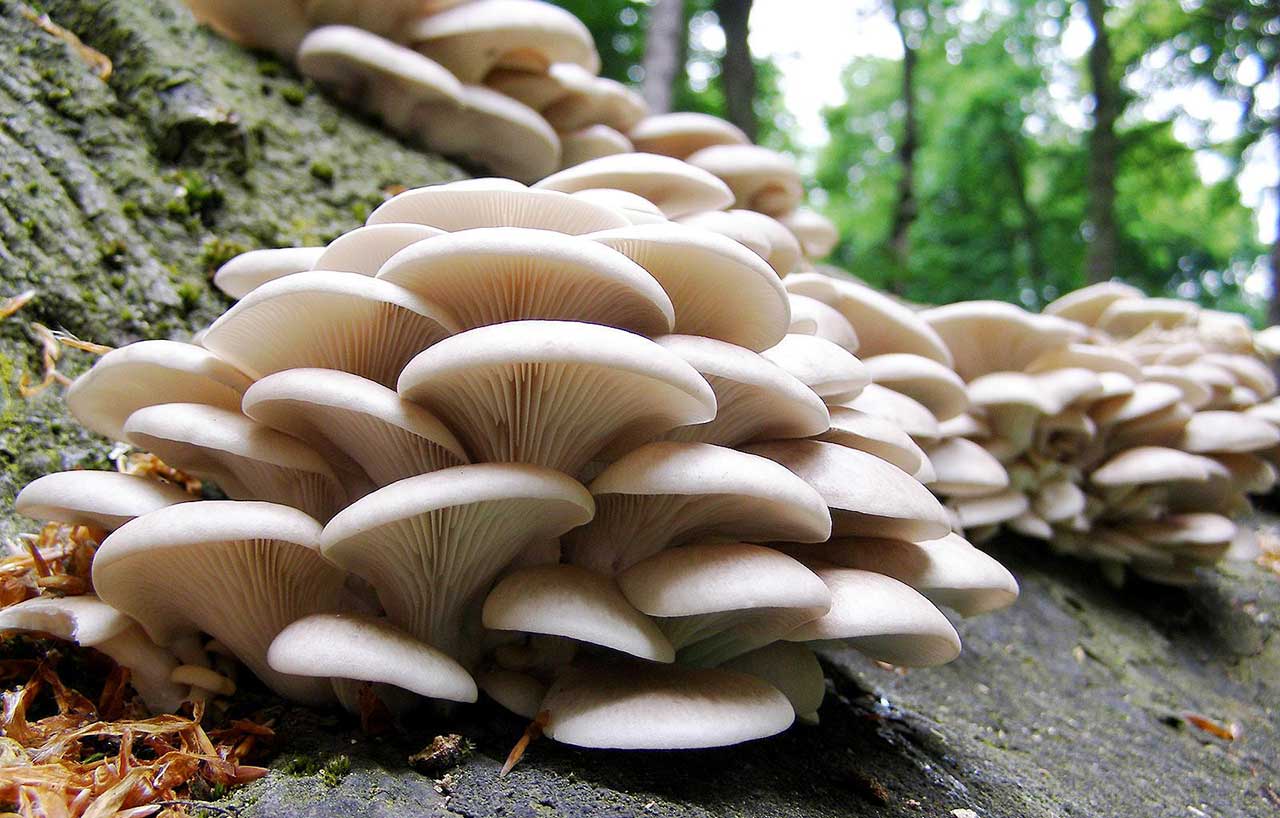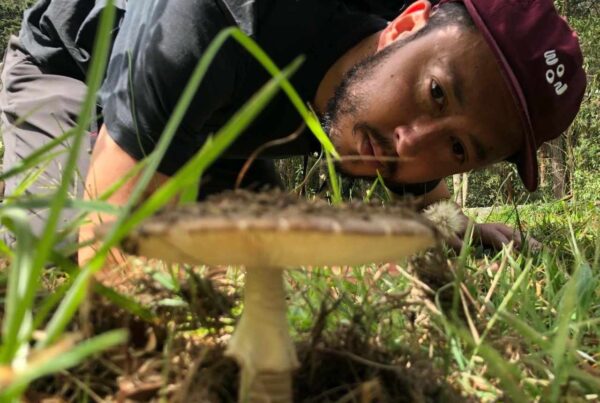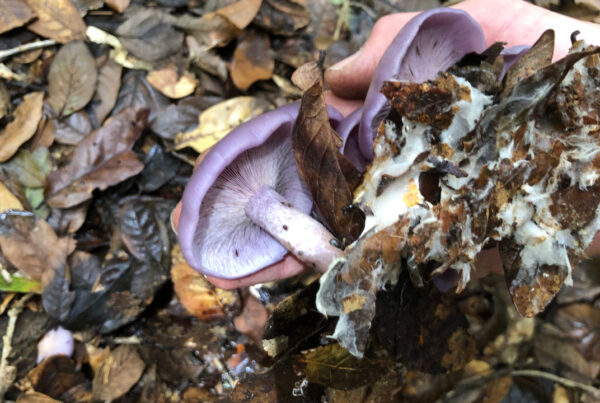One of Canada’s best places to discover wild mushrooms is in the mountains of British Columbia and Alberta.
The mountain valleys and thick forests of the Coast Mountains near Vancouver and the Canadian Rockies near Calgary provide an ideal habitat for fungi to grow and both provinces have excellent mycology societies that organize mushroom forays in the spring and fall seasons.
You will find a huge variety of edible and medicinal mushrooms growing in the vast forests of Western Canada and this short mushroom identification guide will cover some of the most interesting ones you may discover on your hiking adventures.
The best time to find wild mushrooms depends a lot on seasonal rain but late Spring (May-June) and early Fall (September-October) is generally the best time of year to find mushrooms in the forests of B.C. and Alberta.
Safety Warning: If you want to learn to forage wild mushrooms to eat or for medicinal use, please seek out a local guide or join your local mycology society so you can learn to do it safely and ethically (mushrooms can only be foraged legally without a permit on public Crown Land).
Want to learn how to identify native plants and mushrooms in your area? Get my digital field guides for identifying flora, fauna and fungi.
1. Oyster Mushrooms

Photo Credit: Kathawk on iNaturalist
Scientific Name: Pleurotus ostreatus
Season: September – October
Oyster mushrooms are common edible and medicinal mushrooms that grow off the ground on decaying trees. It is also grown commercially because it is highly nutritious, contains a number of medicinal compounds, and is used industrially for mycoremediation purposes.
2. Lion’s Mane
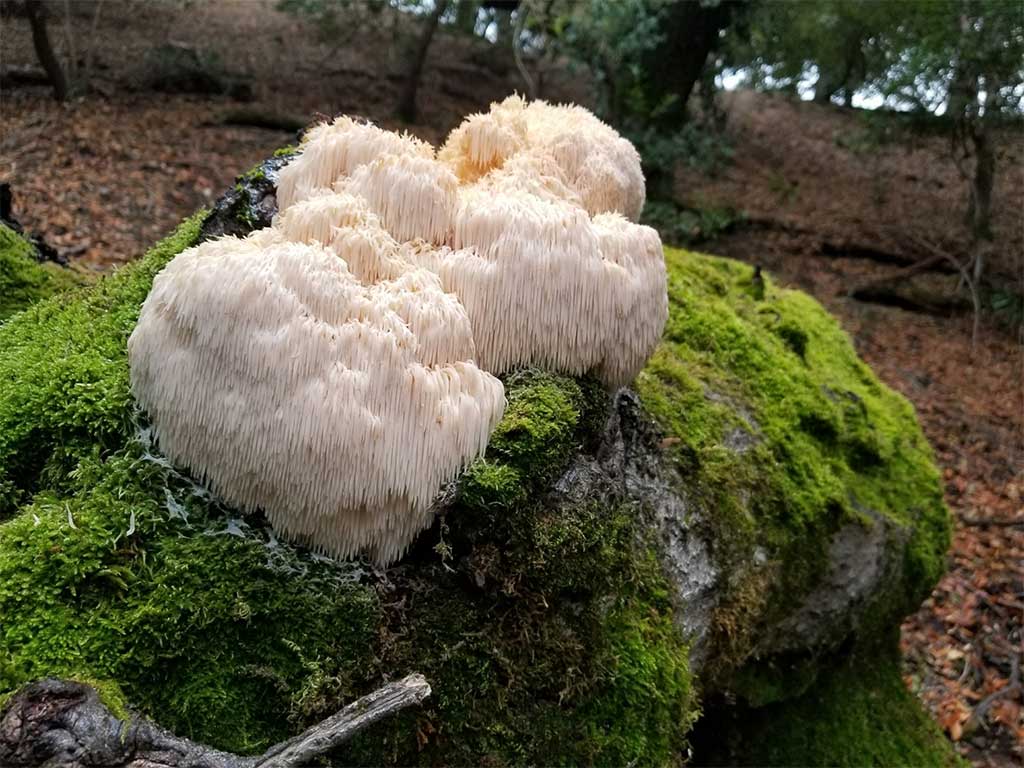
Photo Credit: Keydigs on iNaturalist
Scientific Name: Hericium erinaceus
Season: August – November
Lion’s Mane is an edible and medicinal mushroom that belongs to the tooth fungus group. They grow on decaying wood and they are renowned in herbal medicine because they help improve neurogenesis in the brain, which can improve mood, memory and focus.
3. Shaggy Mane
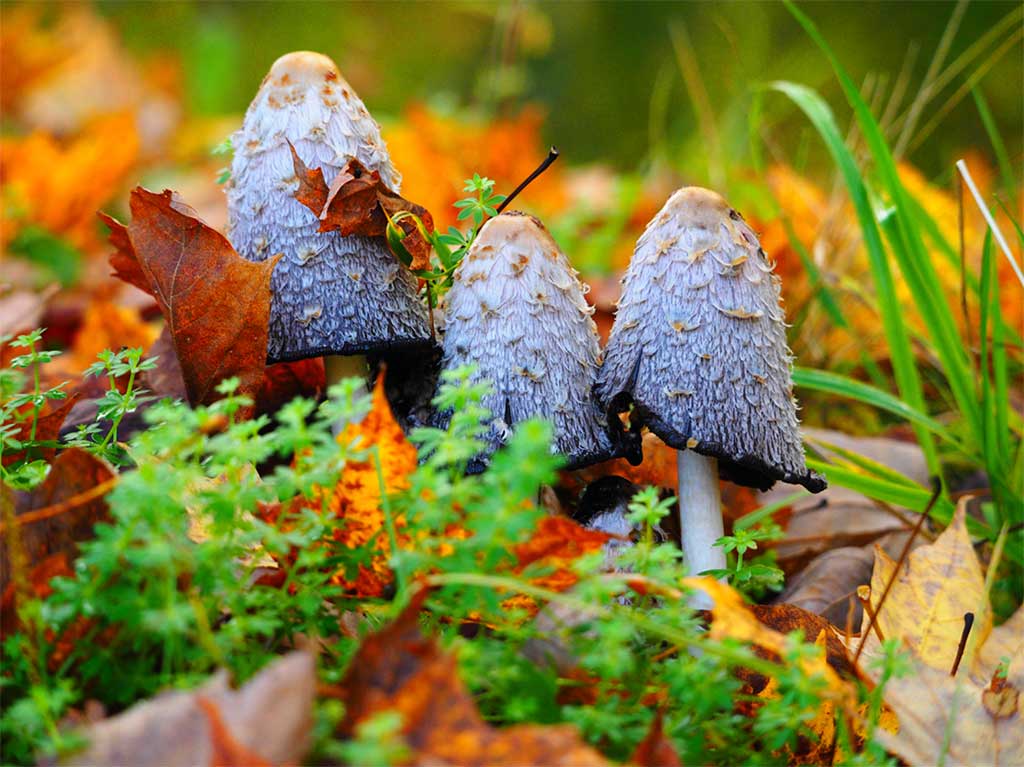
Photo Credit: Gary-james on iNaturalist
Scientific Name: Coprinus comatus
Season: August – November
Shaggy Mane is a rather interesting elf-like mushroom found growing early in the fall season in the Canadian Rockies. After these mushrooms fruit, they will auto-digest themselves and turn into an oily black goo that looks completely different from the original mushroom.
4. Western Giant Puffball
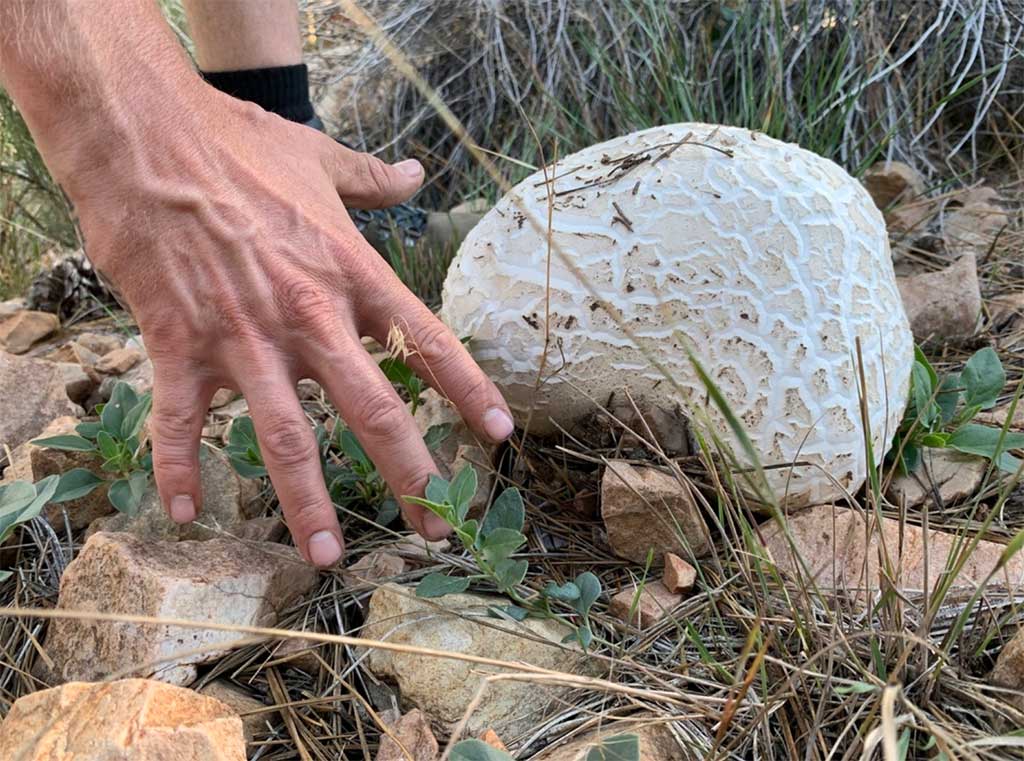
Photo Credit: Amandaboehm on iNaturalist
Scientific Name: Calvatia booniana
Season: May – October
One of the most commonly found mushrooms in Alberta and the Canadian Rockies. Mycology research done at Cornell University found that a single Giant Puffball mushroom may contain as many as 7 trillion spores.
5. Artist’s Bracket
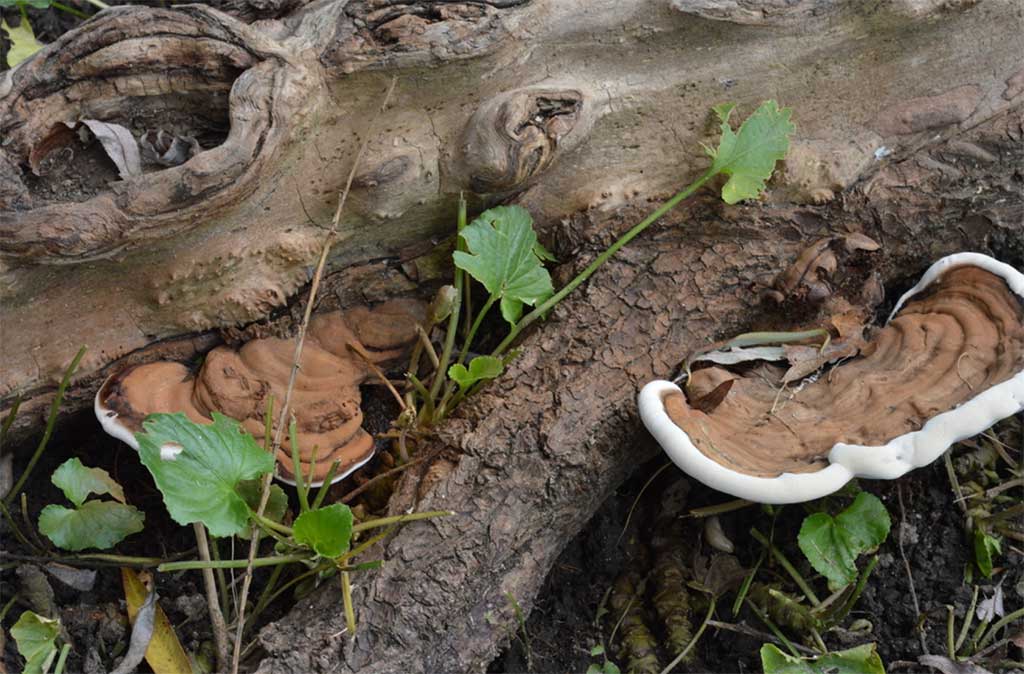
Photo Credit: Mmulqueen on iNaturalist
Scientific Name: Ganoderma applanatum
Season: May – November
The Artist’s Bracket or Artist’s Conk (named because you can draw on its underside) is a parasitic and saprophytic mushroom that grows on the wood of living and dead trees. It is most commonly found at higher elevations in the Canadian Rockies growing on decaying Aspen trees.
As a medicinal mushroom, it must be properly prepared to extract the medicinal compounds in the mushroom. It is used in Traditional Chinese Medicine (TCM) to treat indigestion, alleviate pain and reduce heat in the body.
6. Morel Mushrooms
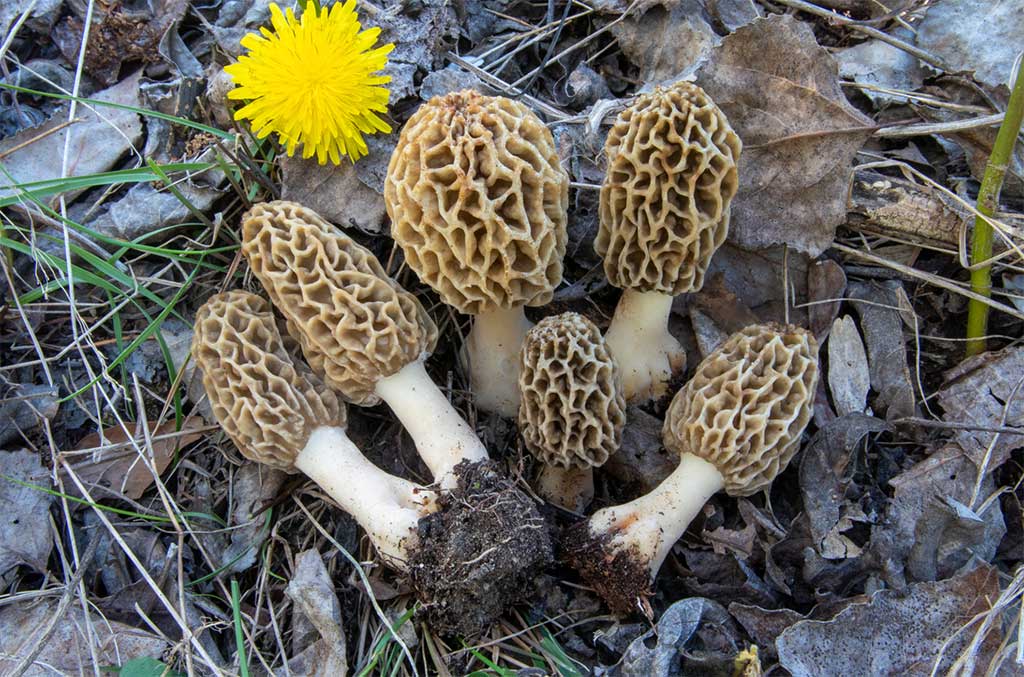
Photo Credit: Nicolo_oppicelli on iNaturalist
Scientific Name: Morchella esculenta
Season: April – June
Morels are a good place to start because they are widespread in the Spring, easy to identify, and are considered one of the most delicious mushrooms in the woods. They have a distinctive honeycomb appearance due to the network of ridges with pits composing their cap.
7. Dryad’s Saddle
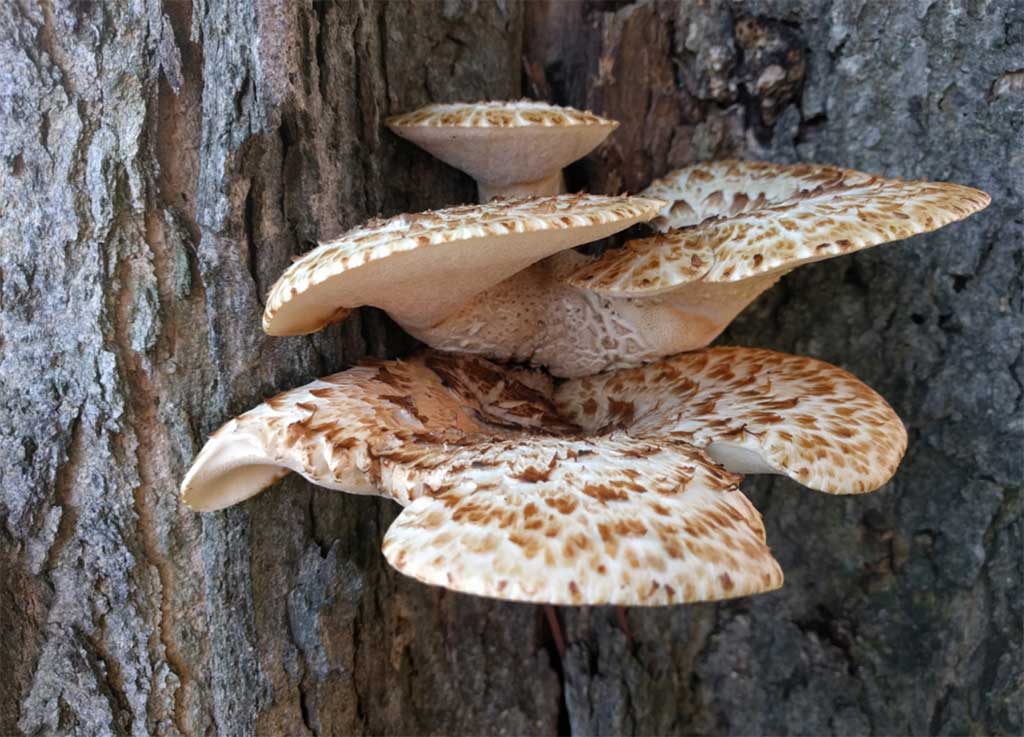
Photo Credit: Bdunnette on iNaturalist
Scientific Name: Cerioporus squamosus
Season: April – June
The name “dryad’s saddle” refers to creatures in Greek mythology called dryads (tree nymphs or tree spirits) who would fly on this mushroom in ancient legends and fairy tales.
They are found abundantly in the Spring and they can be quite delicious when they are fresh but only for a short window of time before they become tough and inedible. Although you may also find them in the summer and fall season they won’t be fresh or edible.
8. Turkey Tail Mushrooms

Photo Credit: Calopteryx on iNaturalist
Scientific Name: Trametes versicolor
Season: April – November
Turkey Tail is the most common medicinal mushroom you will see in the forest. It can be found just about anywhere you search growing on decaying logs. It has powerful energy and immune system-boosting properties and is even showing promise in reducing the size of cancer tumours.
As a medicinal mushroom, it must be prepared with a decoction or alcohol extract in order to be properly consumed as a tea or tincture. If you want to take medicinal mushrooms for health reasons, I recommend seeking out a local herbalist.
9. Chaga
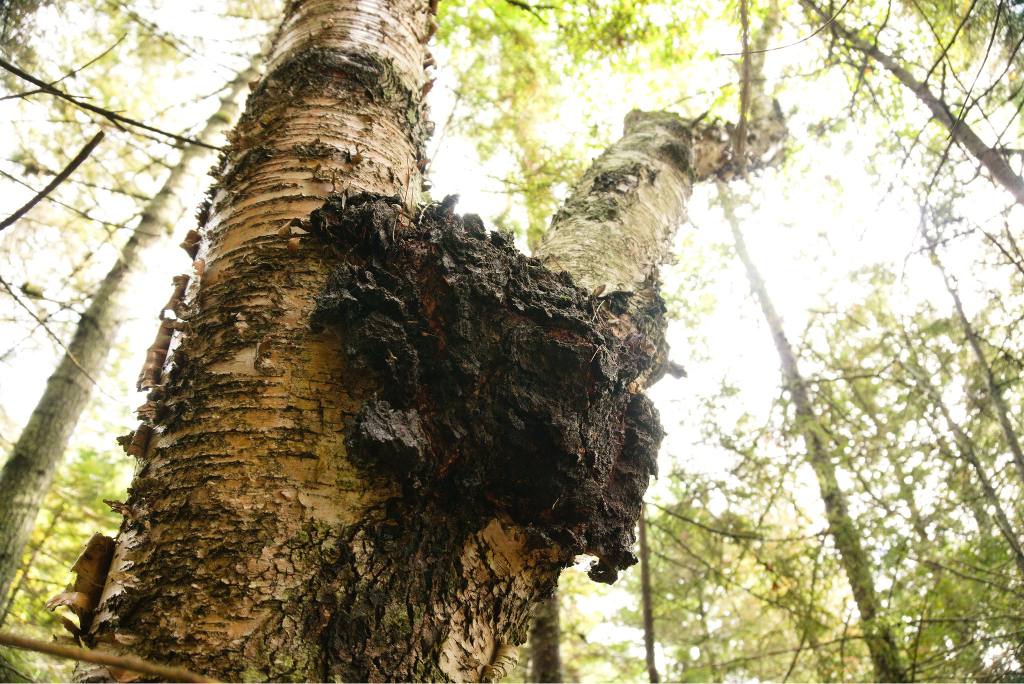
Photo Credit: Lucianvazquez on iNaturalist
Scientific Name: Inonotus obliquus
Season: Year Round
Often referred to as the diamond of the Boreal Forest, the word Chaga comes from Russian and translates as a “Gift from God”. It grows abundantly in the boreal forest zone in Northern British Columbia and Alberta but it is sometimes found on birch trees growing further south.
As a medicinal mushroom, Chaga is grated into a fine powder or broken into small chunks and then brewed as an herbal tea. Traditionally, it is used during the winter to boost energy, mood and immunity.
10. Yellowfoot Chantrelles
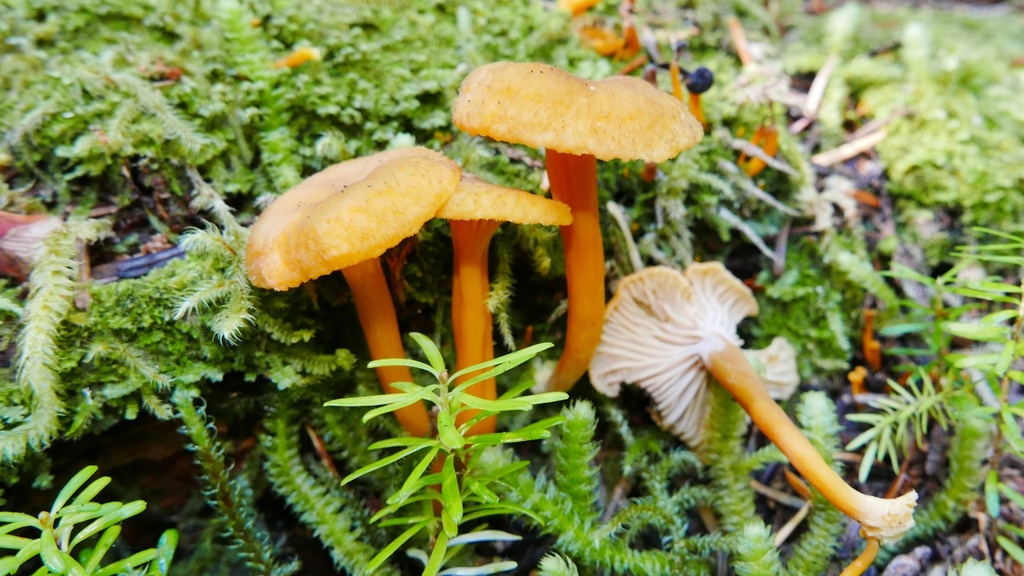
Photo Credit: Natvik on iNaturalist
Scientific Name: Craterellus tubaeformis
Season: August – October
Yellowfoot chanterelles are known to have a milder, less fruity taste than golden chanterelles. Because they retain their texture very well, they are great for cooking, frying, pickling, drying, as well as freezing.
These choice edibles are usually found growing near Douglas Fir trees. You will find them in abundance along the B.C. Coast in the fall season.
Finding Edible Mushrooms In The Wild
The fall season in British Columbia and Alberta is the best time of year for discovering the widest variety of edible and medicinal mushrooms. This is helpful because many medicinal mushrooms can be collected to boost your energy, mood and immunity during the long and harsh Canadian winters.
I hope this post inspires you to see what kind of wild mushrooms you can discover and identify on your next hike in the mountains of B.C. and Alberta.
If you dedicate yourself to learning more about fungal ecology and all the incredible edible and medicinal mushrooms growing in the forest then one day you can start to forage them in your community confidently.
- 10 Best Peru Hiking Tours And Multi-Day Treks In The Andes - April 19, 2025
- 10 Best Banff Hiking Tours In The Canadian Rockies - April 19, 2025
- 10 Best Vancouver Hiking Tours In The B.C. Coast Mountains - April 19, 2025


